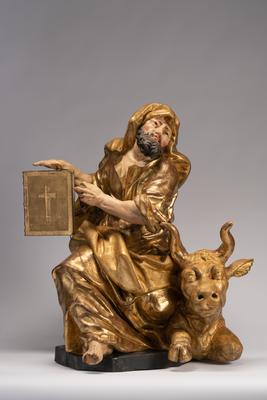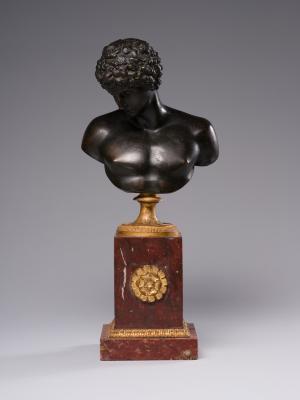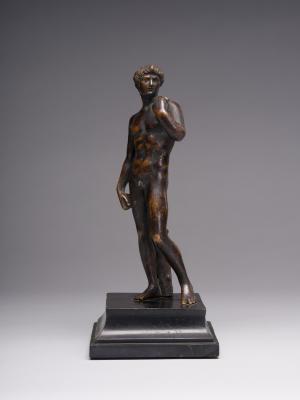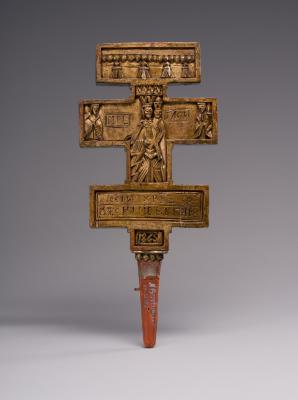The composition is from the Neapolitan series. In 1815, B. Pinelli performed the engraving Il Cocommeraro, known from the album Nuova Raccolta di Cinquanta Costumi Pittoreschi… (New Collection of Fifty Picturesque Costumes) dated 1815. The author has significantly changed the Lviv version of this composition. Another version of this composition is similar to the Lviv one, which depicts more characters and is performed in a square frame (the exact year is not defined). It is a foreground composition. A seller of watermelons is depicted at the table in the centre of the engraving; he is inviting buyers, raising his hands with a watermelon cut in half. He is wearing a light shirt with a red vest and long blue pants; he has a red cap on his head. His assistant is depicted at the table on the left. He is cutting the next watermelon with a large knife. He wears the same light shirt, red pants, and a black hat. There are watermelon buyers in front of the table, namely a young mother enjoying the watermelon taste. Her child is depicted next to her; a boy is stretching out his hands for the watermelon as he wants to taste it, too. The woman is dressed in a traditional blue Neapolitan vest with a yellow edging and a long crimson skirt; her head is covered with a long headscarf. The boy is wearing yellow clothing. On the right are two more consumers of sweet berries: a teenage girl in a blue skirt; a red headscarf is thrown on her shoulders, and she is girded with a broad yellow belt. There is a man next to her; he has a bag over his shoulder; he is wearing a hat, a blue jacket, red pants, and white stockings. He has a horn and a flask on his belt. Three rows of cut-in-half watermelons are displayed on the shelves to the right. A picture is hanging on an improvised gallows above them; it depicts two people rolling a huge watermelon. The composition is bright and saturated with warm colours, among which the crimson colour dominates.



















